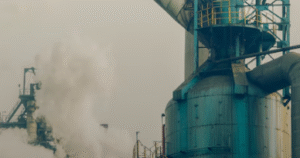$XOM $COP $GOLD
#Trump #Alaska #Oil #Gas #Mining #Energy #Economy #NaturalResources #Investing #Stocks #Commodities #Business
Despite the Trump administration’s support for fossil fuel development and resource extraction, Alaska has remained a challenging environment for investors and companies looking to tap into the state’s vast energy and mineral wealth. The state’s economy has long relied on oil production, particularly from Prudhoe Bay and newer Arctic projects, but regulatory hurdles, market volatility, and environmental opposition have presented ongoing obstacles. Additionally, despite past Republican-led efforts to expand drilling in the Arctic National Wildlife Refuge (ANWR) and other protected areas, many projects have struggled to gain traction. While Trump’s policy stance encouraged greater investment in energy and resource extraction, companies have had to weigh economic feasibility, fluctuating commodity prices, and the potential for legal challenges when considering operations in Alaska.
One of the central challenges for energy and mining companies in Alaska is the high cost of extraction. Harsh climate conditions, remote project locations, and the need for expensive infrastructure have made it difficult for firms to achieve profitability amid market fluctuations. Although Trump’s administration worked to open lands for resource development, including approving projects in ANWR, the economics of these ventures remain complex. Major oil producers such as ExxonMobil ($XOM) and ConocoPhillips ($COP) stand to benefit from deregulation, but their willingness to commit capital depends on global oil prices and economic stability. Similarly, the mining sector, including gold and rare earth element extraction, has seen investors eyeing opportunities in Alaska’s resource-rich geography, with companies such as Barrick Gold ($GOLD) positioned to expand if policies remain favorable.
Beyond the financial aspects, environmental and regulatory challenges continue to cast uncertainty over Alaska’s future as a resource-development hub. Conservation groups and local communities remain vocal opponents of expanded drilling and mining, citing concerns over climate change, wildlife disruption, and Indigenous land rights. This opposition has led to prolonged legal battles that can delay or entirely halt major projects, further adding to the risk profile for investors. For instance, the Pebble Mine project—seen as one of the world’s largest untapped copper and gold deposits—has faced continuous hurdles despite Republican political backing. Investors and corporations must navigate this landscape carefully, balancing political shifts with on-the-ground realities when considering long-term commitments in Alaska’s energy and mining sectors.
Looking forward, whether Trump could truly unlock Alaska’s resource potential hinges on market conditions, regulatory stability, and corporate risk appetite. While a potential second term for Trump might again encourage pro-extraction policies, companies will still have to assess whether tapping Alaska’s reserves offers competitive returns compared to opportunities in less costly regions. Additionally, commodity markets, particularly for oil and gold, play a significant role in determining investment appetite. If oil prices remain strong, investment in Alaskan fields could increase, while precious metal rallies could spur greater interest in mining projects. However, overarching economic shifts, geopolitical tensions, and environmental litigation will continue to dictate whether Alaska’s vast natural wealth is fully realized or remains an unrealized opportunity.







Comments are closed.